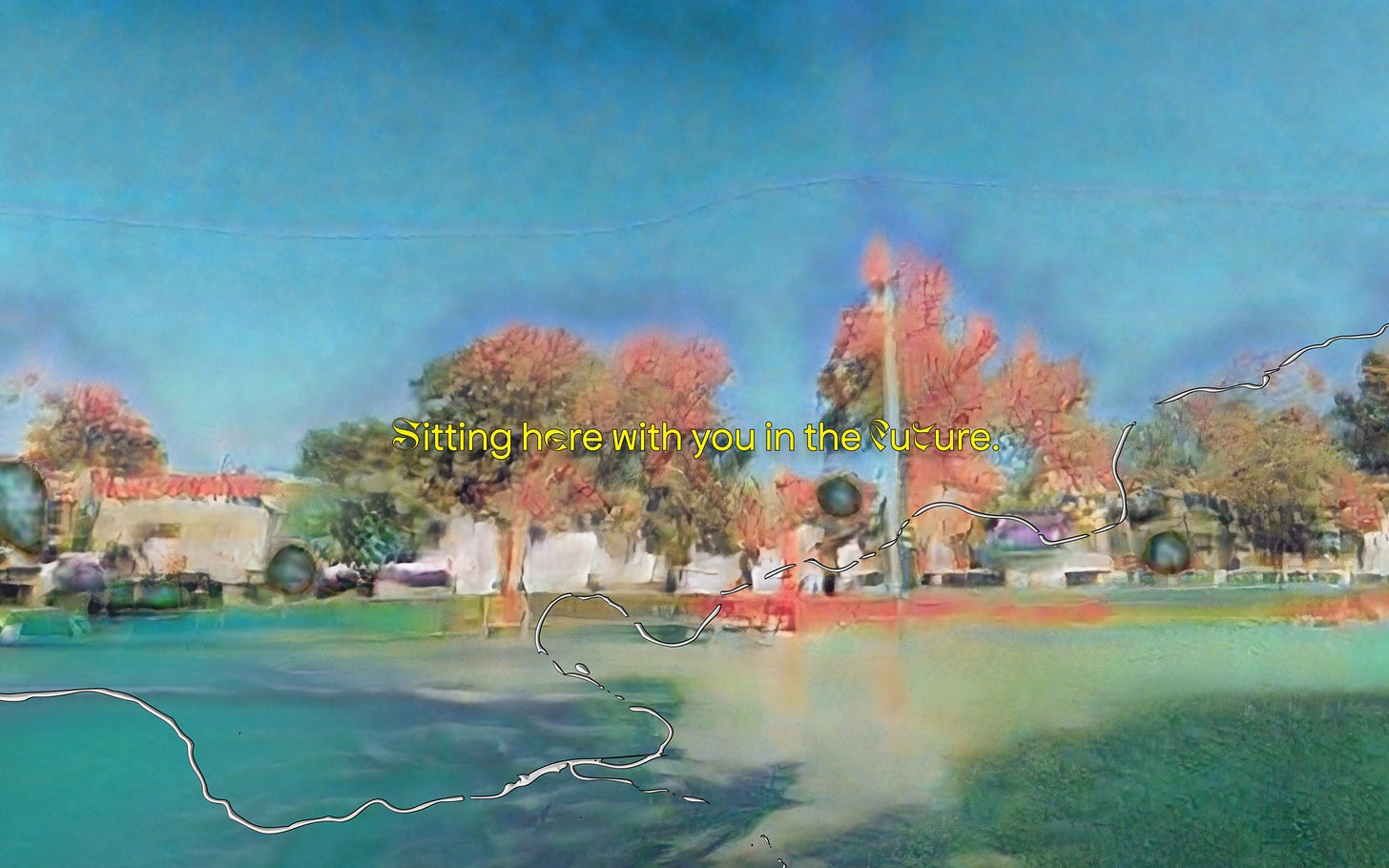You’ll always remember the tree you sat under when you came out to your best friend, the park you shared your first gay kiss, the bar your crush broke your heart in, and the public picnic table you were fucked on in the middle of the day … At the end of my first issue I promised less cynicism, so this time I’m sharing Queering the Map. It’s fairly well known, but I’m happy to be singing in this gay choir.

Queering the Map utilises community-generated data to create a counter-map of the world. Designer and researcher, Lucas LaRochelle, started the project in 2017, originally hosting only five points of reference to their formative queer experiences. Months later it blew up and it now hosts over 86,000 queer stories, such as this six-word horror story:
The stories range from the funny and erotic to more serious accounts of sexual violence and homophobia. The experiences vary widely, especially considering the cultural disparity of identifying as LGBTQ+ around the world. However what ties all these points together is the way in which they depict a development of queer space in an otherwise hetero world. The markers scattered on Queering the Map are not typically queer “safe spaces” or venues as such, they signal temporally reclaimed space.
If philosopher Michel Foucault got a dollar for every time someone quoted the following … well he’d still be dead, but according to Foucault: to be queer is not about sexual identity, rather it’s a way of life. The spaces pinned on Queering the Map are not queer because of the presence of homosexuals, they’re queer because they’ve been queered through action. Whether that action is being fisted by Voyages in the middle of Australia or the formation of queer friendships in the city of Melbourne, a queer space and time is developed in opposition to the institution of heteronormativity.
Unlike a conventional wayfinding map, Queering the Map privileges the experience of getting lost — with no search bar it isn’t particularly easy to navigate, the data points regularly become crowded and hard to differentiate, and it demands the user to drag themselves around in hopes of finding a recognisable spot. All the experiences collated on the map are read as concurrent regardless of the date of their story or when they were submitted. There’s a subsequent flattening of queer time and stretching of queer space.
The artist Aude Nasr beautifully captures this expansion and contraction of time and space in her illustration series inspired by pins located in and around the Arab World.
QT.bot
QT.bot is an artificial intelligence (AI) developed by Queering the Map’s creator, Lucas Larochelle. The AI has been fed data from the map, including all text entries to the platform and the Google Street View imagery of the pinned locations of those text entries.
For Larochelle’s series Sitting here with you in the future, the AI generates its own Google Street View images and text based off machine learning from the data it has been fed. The resulting narratives are these dream-like musings on the possibility of queer futures. Like queer theorist heavyweight José Esteban Muñoz before it, QT.bot points to a queer feeling of hope for the future — a feeling of hope that comes from our collective and our collective data.
Update on MariCoin
You should probably read the last issue if you want to understand this update.
A month ago I woke up at 5am to catch the Algorand Miami Accelerator. It wasn’t particularly interesting but if I’m waking up that early, then you have to read about it! I sat through projects like Fútbol Eterno, an NFT platform for Argentine Soccer, and Crypto Stars, a sports betting service with trading of tokens that represent your favourite athletes. It really goes to show the uninspired hetero space that MariCoin is entering.
Each of the ten projects were given 5 minutes to present to investors and answer questions. Some hapless projects didn’t meet their allocated investment targets, with Crypto Stars only making $20k, and a project called Dartroom, a ‘sustainable NFT marketplace’, which currently has no investments whatsoever, ouch!
However, MariCoin was one of the few projects that met its $75k investment allocation and is oversubscribed. It currently sits on $122k in investments, so it looks like a few people believe in this project … did they not read issue 1 of Queer Computer?
During question time I gave them the opportunity to clarify their supposed motives.
Queer Computer: How does MariCoin actually help against financial discrimination to LGBTQ+ peoples?
Algorand representative: They have saved some tokens for special projects in the LGBTQ+ "ecosystem". You can check more details in their whitepaper
Random person: The LGBT community needed a currency like this.
Another random: What happens if a person is not part of the LGBTI+ community?
MariCoin representative: MariCoin does not discriminate non-LBGTs
I’ve consulted their whitepaper and found said saved tokens for “special projects” in the “LGBTQ+ ecosystem”:
An additional 2% convertible into FIAT will be allocated to specific projects to help the collective that require immediate liquidity and will also be managed by the associations promoting such projects. In the second half of 2022, it will also finance a specific accelerator to be organized by MariCoin with the support of its U.S. partner Rokk3r, which is a co-promoter of the Miami Algorand Accelerator.
That 2% counts for 200 million MCOIN — about $5 million US. It’s a pretty vague allocation of five million dollars if you ask me! And to be honest, financing ‘a specific accelerator’ doesn’t exactly sound the same as ‘special projects in the LGBTQ+ "ecosystem"’. I’m betting that queer identifying people experiencing financial discrimination won’t see a single dollar of MCOIN … and I’ll be betting that through Crypto Stars.
Logging off
Anyways, I’m off to the Metaverse Fashion Week. Ta ta for now, but not for long.








